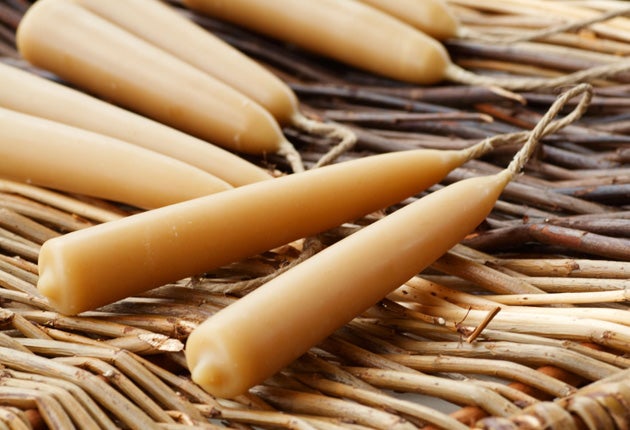Is that a candle – or a consignment of smuggled cocaine?

From home-made submarines to swallowable pellets made out of condoms, cocaine barons have long resorted to unusual methods to smuggle their merchandise into Europe. But even the most suspicious customs officer would be unlikely to cast a second glance at plastic buckets, beeswax candles or bird faeces as likely drug hiding places.
They would be wrong. Increasingly, says the European Union-wide agency charged with gathering intelligence on the £200bn global market in illicit drugs, South American cartels are resorting to production methods which allow them to conceal cocaine by incorporating it in the manufacturing process of a host of innocuous products, from plastics to fertilisers.
Rather than the traditional method of secreting the powdered drug inside the cavity of, say, a bottle or a child's toy, smugglers are mixing cocaine with molten plastic before it is turned into items from car dashboards to DVD cases and, in the process, rendering the narcotic virtually undetectable by conventional tools such as sniffer dogs.
The European Monitoring Centre for Drugs and Drug Addiction (EMCDDA) said it was deeply concerned at the "growing sophistication" of the smugglers' methods, which include establishing a network of laboratories across Europe to turn the consumer durables laced with cocaine back into powdered drugs, using a chemical process.
In a joint report with Europol, the agency said 38 so-called "secondary extraction" laboratories had been found in 2008 (the most recent year for which figures are available) across the EU, with production centred on Spain, the gateway for an estimated 50 per cent of the cocaine sent to Europe, and the Netherlands.
Drugs analysts said that although the exact quantity of cocaine being transported in this form was impossible to ascertain, drug barons in Colombia and Peru are increasingly using this method of concealment to circumvent enforcement efforts which target drugs mules and fast boats bringing consignments to the shores of Spain.
Cocaine abuse has increased dramatically in Britain and continental Europe since the mid-1990s, despite a tripling of seizures in the same period, indicating that drugs gangs are pouring huge resources into the lucrative European drugs market. In the last year, some 3 million young adults in the EU are estimated to have used cocaine.
Wolfgang Gotz, director of the Lisbon-based EMCDDA, said: "I am particularly concerned by our latest analysis which illustrates the growing sophistication and innovation of cocaine traffickers in circumventing the law."
Under the new smuggling method, the gangs take cocaine hydrochloride, the powdered version of the drug, and mix it with liquid melted plastic then inject it into a mould. The resulting products, which have ranged from dog carrying-cases to washing-up bowls, are indistinguishable from legitimate merchandise but can contain up to 30 per cent pure cocaine.
After the products reach their destination in Europe, the items are chopped into small pieces and dissolved in acid as part of a process that frees the cocaine from the plastic and allows it to be recovered in liquid form, ready to be dried into a powder for sale on the streets.
The method has also been used to disguise cocaine in consignments of guano fertiliser, dried herbs, beeswax polish and upholstery in furniture.
Laurent Laniel, a drug supply reduction analyst with EMCDDA, said: "The profit margins in the cocaine trade are so vast that even going to the extra expense of these methods, the cartels still expect to make large sums."